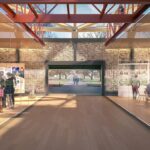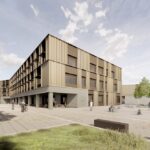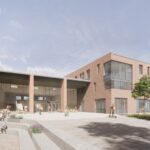PPP, Scottish Schools, PFI Scotland, News, Construction, Building, Policy
PPP Scottish Schools
Public-Private Partnership – Private Finance Initiative (PFI)
15 Oct 2007
Scottish PPP Schools
News Update Oct 2007 – Scottish PPP Inquiry
Scottish Government finance committee PPP Inquiry:
Written evidence to be submitted by 7 Dec, oral testimonies planned for Jan-Jun 2008. Significant changes are being suggested.
Edinburgh schools £100m project reportedly on hold whilst the review takes place.
News Update – Oct 2007: Attack on Scottish PFI / PPP
Unison launch attack on Scotland’s love affair with PPP claiming it is ripping off society in the long-run, fairly obvious since its inception. The concept surely goes like this: save money now (low taxes) but pay far more later (never mind, the younger generation can deal with that). The only question is how to persuade those responsible to take a more sustainable long-term view.
News Update – Oct 2007: Public Building Procurement
Scottish Parliament inquiry announced into the methods used to fund public sector capital investment projects has been announced. The Finance Committee has begun gathering views on advantages & disadvantages of different funding models, and on how policy can ensure that projects are cost-effective and deliver good public services.The Scottish Government is considering how it might improve capital project procurement and has announced that it is developing proposals for a Scottish Futures Trust.
News Update – Feb 2007: Scottish PFI Policy
In the same week as the Architecture Policy update was launched the A+DS deputy, Malcolm Fraser, resigns his position following unease with A+DS’s lack of criticism of the Scottish Executive’s PFI policy for schools, hospitals, etc. This issue has refused to go away since PFI commenced in Scotland and at A+DS rumbled on from the Highland Schools controversy – Scottish PPP Schools.
Most people are aware that PPP is so massively beneficial to the government – keeps taxes low, etc. – that it’s hard to imagine a policy u-turn. Many commentators and bodies – such as CABE – have decided to work with PPP and try and tweak it to achieve better design. Down in Kent reports this week state that Skanska have brought on board design-led practices such as DSDHA and flacq to compete for a massive tranche of school buildings so there is a degree of complexity about this.
PPP costs much more in the end and seems to not produce great architecture in general but, in Malcolm Fraser’s words:
1. payment is deferred off the Chancellor’s balance sheet (though successors have to pay back much more)
2. contracts/procurement/democratic accountability is privatised, and architectural work tends to go not to architects who care for value for money for the community, but are prepared to care for the Consortium’s shareholders first.
The Scottish Executive must lead by example and bodies such as A+DS must help this process. Views welcome: info(at)e-architect.com
Links:
Architecture + Design Scotland
RIAS PR re Scottish PPP / PFI Schools May 2004
LACK OF CONSULTATION WITH TEACHERS LEADS TO CONCERN OVER QUALITY OF SCHOOL RE-BUILDS
Scotland’s teachers have sent a clear message that they are extremely concerned about the quality of newly built and refurbished schools and the ways in which this will affect teaching and learning. Many teachers believe that they have not been properly consulted on the refurbishment / new build process and that this lack of consultation has led to schools which may not provide adequate facilities fit for the delivery of a 21st century education for Scottish school pupils.
Only 27% of teachers feel that their comments during consultation had any impact on the plans for their school. And only 30% of teachers believed that their new or refurbished school provides good value for money.
The findings come as part of a national survey of new-build / refurbished schools, carried out by the Educational Institute of Scotland (EIS). Every newly built and refurbished school in Scotland was sent a questionnaire asking for their opinions on the planning and consultation processes and the completed school. The majority of schools surveyed have been developed under Public-Private Partnership (PPP) schemes or Private Finance Initiative (PFI) schemes, as this is the finance option of choice for the Scottish Executive and most local authorities for major building projects.
Announcing the survey findings from Edinburgh, EIS General Secretary Ronnie Smith thanked the Royal Incorporation of Architects in Scotland for their assistance with the preparation and analysis of the survey. Mr Smith said, ‘The results of our survey clearly show that there is acute concern amongst teachers over the quality of facilities delivered through PPP and PFI schemes. The main concern for teachers is the complete lack of meaningful consultation or input at the design stage of new school facilities.
Teachers are essentially questioning the value of building schools without asking for the input of the people who will work in those schools every day. Teachers are also asking questions about the value for money these new schools provide. This is a concern which the EIS has long shared in relation to PPP/PFI schemes and also one of the reasons that we are opposed in principle to such schemes – they simply do not provide good value for money to the public purse in the long-term.’
Mr Smith added, ‘The main focus of any school build or refurbishment should be to deliver the best possible facilities for pupils and teachers in order to support effective teaching and learning. Sadly, the results of our survey indicate that teachers do not feel that this is happening. This is a missed opportunity. It is vital that teachers are fully involved in the process in order to ensure facilities and schools fit for their purpose and the needs of our young people.’
Mr Smith did also highlight some more positive feedback from teachers – ‘The better news is that 72% of teachers who responded did feel positive about the impact that their new or refurbished school had on teaching and learning. Also, over half of respondents (53%) felt that their new school would be able to adapt to future developments such as smaller class sizes, while over two thirds (67%) were generally positive about the new PE facilities available for pupils within their school.’
Sebastian Tombs, the Chief Executive of the Royal Incorporation of Architects in Scotland, said, ‘The EIS is to be congratulated on undertaking this survey – and its members thanked for responding honestly. The report’s conclusions reinforce messages which the RIAS has been making consistently for years: the appropriate involvement of all stakeholders to develop the brief and contribute to the final solutions is absolutely vital if success in new school design is to be achieved consistently.’
‘Teachers and pupils, janitors and parents need to be able to participate, not merely ‘be consulted’. In too many cases, it seems, even consultation was very limited. Some of the more unhappy quotes indicate a process which has been truncated, where conversations on educational outcomes have not been allowed, and where management and maintenance roles have not been sorted out. Schools need to be durable and sturdy if they are to survive, as well as good places to enhance teaching and learning.’
Mr Tombs added, ‘Much more must be done to rectify these limitations – and soon. Too much has already been spent which is not considered to be value for money. We must maximise the chances for giving our children’s education our very best shot. The future depends on it.’ Ronnie Smith added that the issues emerging from the survey would be raised directly with the Scottish Executive and with local authorities. Copies of the report will be sent to the Scottish Executive and to local authorities and will be made available to schools.
Some of the most revealing results of the EIS survey include:
Only 27% of teaching staff feel their comments had an impact on the plans for the school
Only 30% of teaching staff believe that their new school represents good value for money
Only 20% of teaching staff felt they had been properly consulted regarding recreational facilities for pupils
Only 30% of teaching staff felt they had been given proper input on Resource areas such as libraries
Only 25% of teaching staff felt they had been properly consulted on health and safety issues
Teachers feel that consultation on teaching and learning environment has been particularly lacking – only 7% of teachers feel they were properly consulted on heating, only 8% feel properly consulted on lighting, only 18% feel properly consulted about corridor space and only 23% feel that they were properly consulted about the correct size for classrooms. However, 72% of teachers responding thought that their new/refurbished school has had a positive impact (rated ‘very good’, ‘good’, or ‘adequate’) on teaching and learning.
53% of teachers believed that new/refurbished schools would be able to adapt to future changes such as planned reductions in class sizes. 67% of teachers rated their school’s new gymnasia, games hall or other PE facilities as ‘very good’, ‘good’, or ‘adequate’. But, only 13% felt positive about the school’s swimming facilities.
Scottish Schools – RIAS information 25 May 2004
Scottish Schools Clackmannanshire
Related news stories re Scottish PPP Schools:
East Lothian Schools Restart
The controversial £43m PPP project to refurbish six secondary schools in East Lothian is set to restart after more than four months of delays.
Feb 2004
Current PPP Scotland Programme
Across Scotland, 29 councils are now part of the current PPP programme involving total investment of over £2.2 billion. By 2009, a further 300 Scottish Schools are due to have been rebuilt or refurbished. Scottish Local authorities were invited in September 2001, to bid for a share of Scottish Executive revenue funding to support school building capital projects under PPP.
Jun 2004
Scottish PPP school buildings
Many Scottish PPP school building programmes are leading to larger schools, which could
exacerbate discipline problems. The average size of schools in Scotland had risen from 700 to 800 pupils since 1990. A necessary part of PPP funding in some urban areas is that the number of schools is reduced, thus school sizes increase.
PFI Budget Cuts
The government’s mid-2004 proposal to cut up to £3 billion from its civil spending bill could reduce profit margins in Scottish PFI projects, construction firms have been warned. Larger projects including IT and construction are due to deliver the biggest savings. Fiscal tightening of the PFI process would make bidding uneconomic for many companies and may damage the ongoing maintenance of Scottish buildings. All but the largest Scottish companies had already withdrawn from PFI and PPP in Scotland due to the cost of bidding.
Jarvis PPP Schools, Fife
Jarvis was removed from a £174m school building project in Fife due to inability to reach a full agreement with Fife Council.
Jarvis made a loss of £255m last year, was preferred bidder for the contract to build and maintain nine Fife schools. Fife Council is reopening talks with the other two short-listed firms, Canmore and Emblem. Jarvis secured preferred bidder status for the Expanding Horizons project in April 2004 and was due to start work in August 2004. Jarvis was competitively selected as the best bid in terms of value for money.
Scottish PPP Schools news stories from 2002-04:
Identkit
Participants at an Edinburgh conference on designing buildings for children and young people aired concerns that existing public-private partnerships (PPPs) have delivered schools with insufficient public spaces, which look like institutions, and lack convenient sports facilities. Scottish Executive ministers appear to be aspiring to European standards of school design but did not wish to pay for them.
25.05.03
PPP School opens
The combined Pirniehall and St David’s RC Primary Schools in Pilton, which is part of a £80m Edinburgh PPP project, opened. The £5.5m complex in North Edinburgh will house both schools on the existing Pirniehall site, designed and built by Amey Miller Construction. The £14m St Thomas of Aquin”s High School in Chalmers Street also opened.
22.08.02
PPP Schools
Ten modern schools would be built across the Capital under a £1 billion plan unveiled today to bring the Edinburgh’s education system into the 21st century.
Eight other schools are also in line for refurbishments or extensions under proposals for Edinburgh City Council’s second Public-Private Partnership scheme.
27.11.02
PFI on a roll
The Scottish Executive has advised it aims to build 300 schools over the next six years using PFI – almost one primary or secondary school per week between now and 2010.
April 2004
Angus Council Schools
Angus Council is inviting tenders until October 20 2004, for a £40m Design, construction, financing and operation of an anticipated seven schools in Forfar.
Oct 2004
Fife Schools
Balfour Beatty has withdrawn its bid from the Fife Schools project to build ten new schools. The withdrawal by Balfour Beatty for the £174m schools project leaves Fife Council to negotiate with the remaining bidder, Miller Construction. Two months ago Jarvis was removed as the
preferred bidder for Fife Schools.
Community School, Fife
Anderson Bell + Christie
This £12.5m project has been hailed a champion in the discussion about improving the fife school estate. The Auchterarder campus provides Nursery, Primary and Secondary Schools. The Auchterarder Community School adopts a ‘green’ agenda incorporating a number of sustainable features including wetland area, reclaimed materials and natural ventilation. Artists were involved from an early stage.
PPP Scotland
Across Scotland, 29 councils are now part of the current PPP programme involving total investment of over £2.2 billion. By 2009, a further 300 Scottish Schools are due to have been rebuilt or refurbished. Scottish Local authorities were invited in September 2001, to bid for a share of Scottish Executive revenue funding to support school building capital projects under PPP.
Jun 2004
Schools PPP Project
Stirling Schools PPP Project is a £60m Scottish Executive-funded investment that will transform many of Stirling’s schools over the next four years through Public Private Partnership.
Scottish PPP Schools
Many Scottish PPP school building programmes are leading to larger schools, which could exacerbate discipline problems. The average size of schools in Scotland had risen from 700 to 800 pupils since 1990. A necessary part of PPP funding in some urban areas is that the number of schools is reduced, thus school sizes increase.
Scottish PFI Budget Cuts
The government’s mid-2004 proposal to cut up to £3 billion from its civil spending bill could reduce profit margins in Scottish PFI projects, construction firms have been warned. Larger projects including IT and construction are due to deliver the biggest savings. Fiscal tightening of the PFI process would make bidding uneconomic for many companies and may damage the ongoing maintenance of Scottish buildings. All but the largest Scottish companies had already withdrawn from PFI and PPP in Scotland due to the cost of bidding.
Scottish Schools – Selection
Harmeny School, West Lothian
Royal High School, Edinburgh
Donaldsons College, Edinburgh
Location: Scotland
Architecture in Scotland
Scottish PFI : Replacement : Scottish Futures Trust
Scottish Architecture – Selection
Pier Arts Centre, Orkney
Pier Arts Centre Orkney
Traquair, Scottish Borders
Traquair House
Comments or building suggestions / photos for the PPP Scottish Schools page welcome




